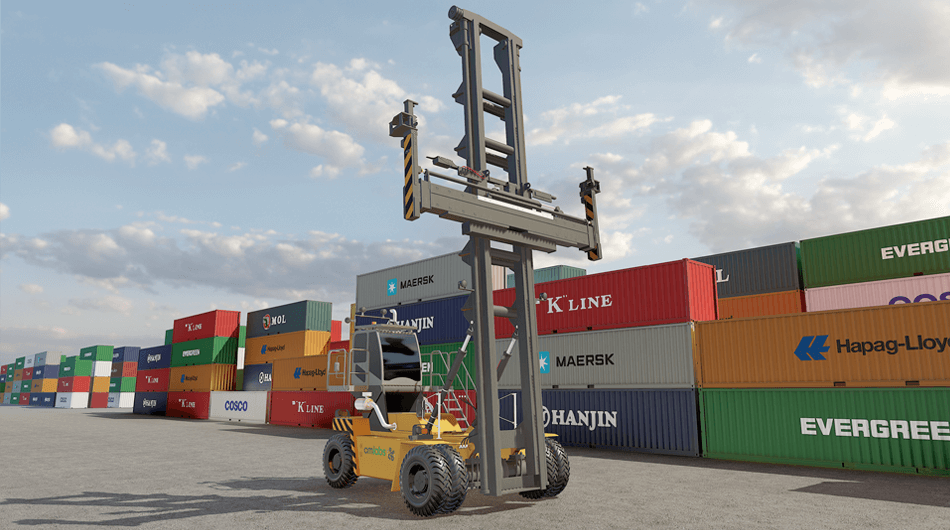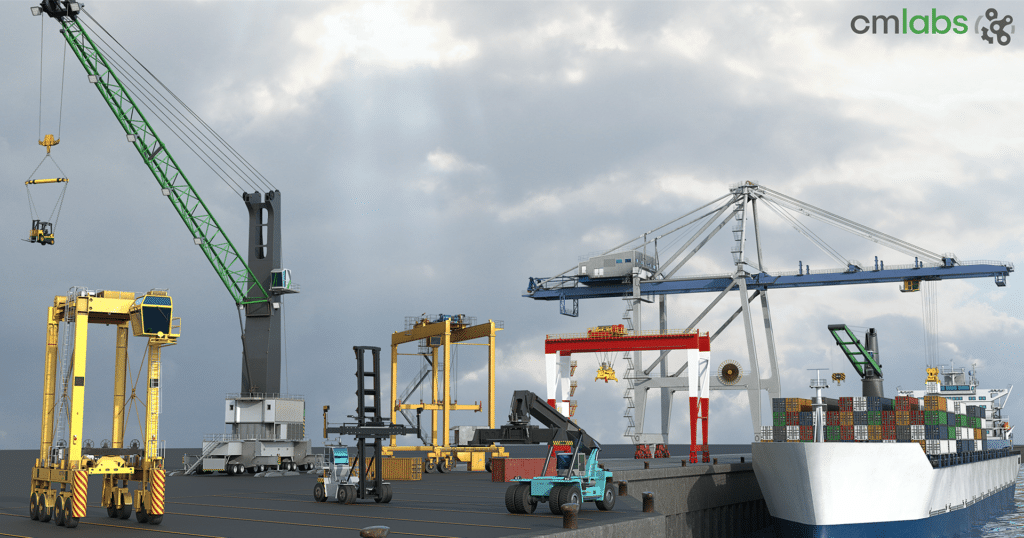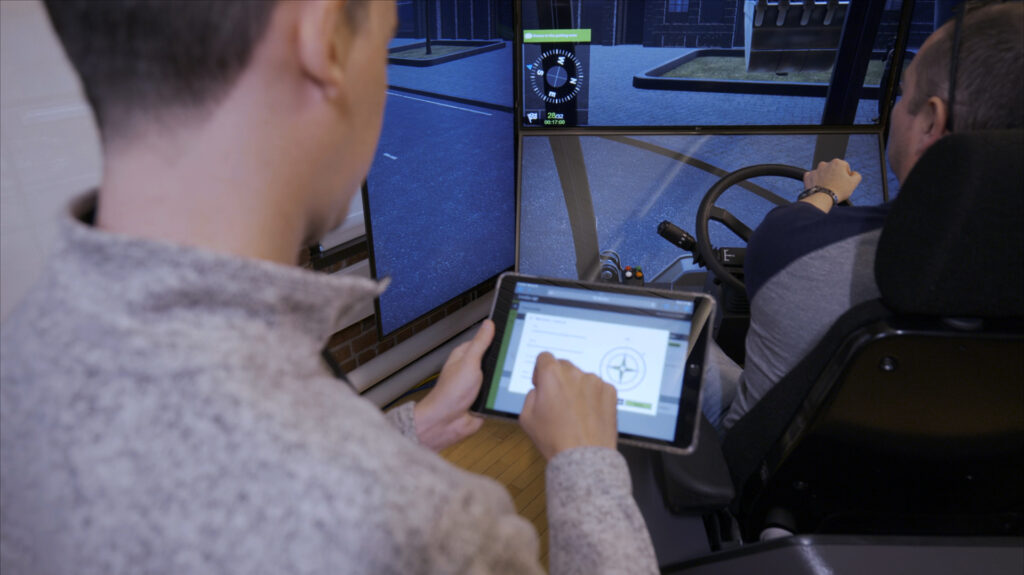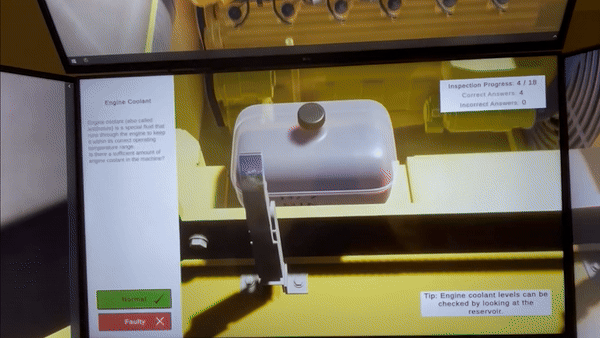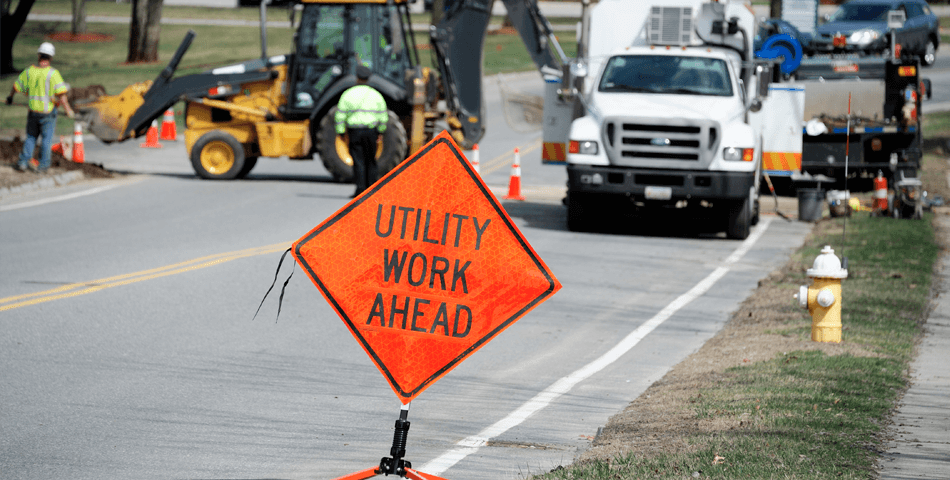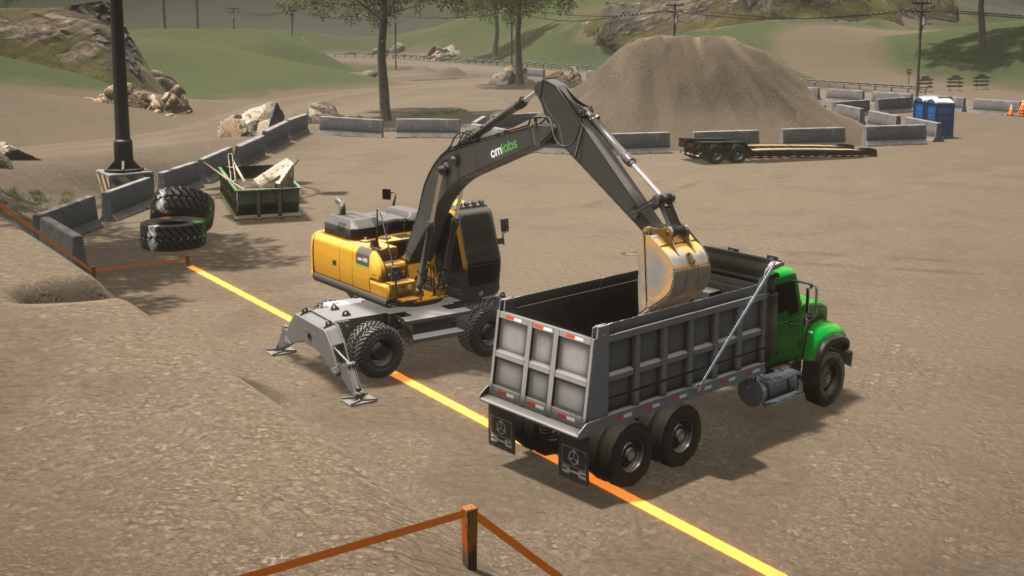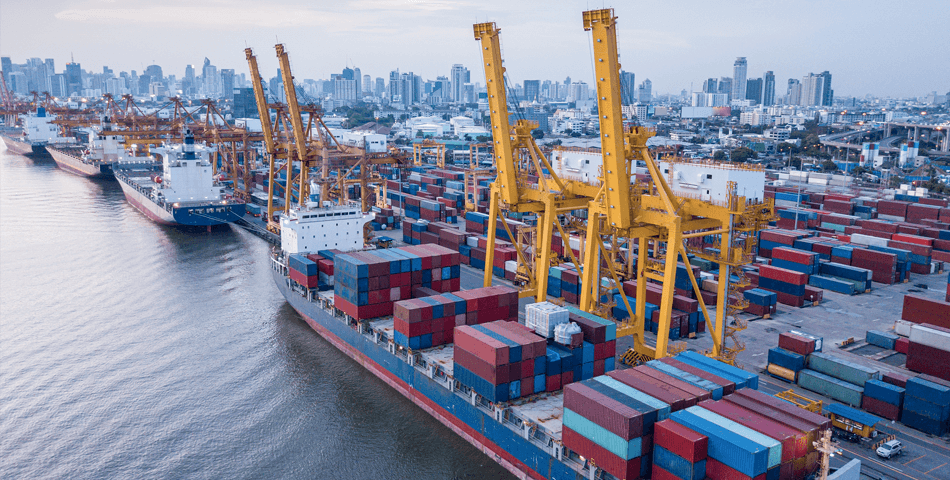For the second time this year, I’m proud to announce a significant release of Vortex Studio. Based on user feedback and our team’s enthusiasm for the product, we have made some significant improvements in Vortex Studio 2018b regarding both dynamics and graphics, and we’ve continued our work on streamlining the installation, deployment, and monitoring of Vortex Studio-based simulations. To provide guidance on what you can expect in this release, we present a run-down of the key features we’ve added. For detailed information, please see the release notes. Dynamics Driven Performance Improvements With Vortex Studio 2018b, the performance of the dynamics module has been enhanced, allowing more physical objects to be modelled within a scene. These advances can be attributed to three main improvements: selective wake-up, relative sleeping, and an improved LCP solver.
Selective wake-up and relative sleeping working together. The dominoes are merged when they tip and then are selectively put to sleep, with only the front dominoes remaining “awake.”
- Selective Wake-up is a new method of speeding up simulations which consist of many parts. Those objects with selective wake-up enabled are allowed to “fall asleep” (thus not taking up computational time) even while still connected to moving parts. These objects only “wake up” if external forces and torques induce sufficiently high motion—with these thresholds being user definable. By suspending simulation of objects in this way, simulation performance is tremendously improved for complex scenes with many disparate parts and dense constraint networks.
- Relative Sleeping is a performance enhancement in which touching objects that are moving with the same motion relative to one another become “fused” and sleep relative to one another. When acceleration exceeds a user-specified threshold, or when an event occurs (such as a new contact), the fused parts split and “wake-up”. Relative sleeping can lead to significant performance gains, specifically when placing many objects (such as containers) on massive moving objects (such as a container ship).
- Direct LCP Solver improvements: Previously, when the Direct LCP Solver – responsible for calculating the constraint forces – failed to find a solution in a given simulation step in the allotted number of iterations, the simulation would jerk or even “explode.” Now, if this case occurs, a newly introduced solver error reduction method will select the most optimal result calculated by the solver up to that point, preventing most instances of simulation instability.
Upgraded Visual Elements On the graphics side, the Vortex Studio Earthwork Systems have been revised to increase the accuracy of simulated soil. It is now possible to simulate soils to a particle size as small as 1mm. As well, soil clump meshes can now consist of multiple graphical materials, adding additional visual complexity.
We’ve made multiple upgrades to our implementation of SpeedTree, and expanded the size and scope of our vegetation library. We have doubled the number of plant types available, adding an excellent selection of leafy and conifer trees, as well as some bushes and grass. Anti-aliasing on leaves and branches has been noticeably improved, and ambient occlusion effects provide volume and depth to the graphics.
Last, but certainly not least, vegetation can now react to the wind! All plants react dynamically to wind speed and direction, and depending on the distance from the user’s point of view, this is visible down to individually moving leaves. These changes are available by installing the optional 2018b Vortex Vegetation Library. On the marine side, the Hull Wake extension has been revised based on feedback from our maritime research partner MARIN (Maritime Research Institute Netherlands). The wake now has a more natural shape and appearance, which is most noticeable when turning or moving sideways. MARIN has likewise provided us with extensive assistance on the Propeller Wash extension. Additional parameters now make it easier to set up a wash that matches a real-world example.
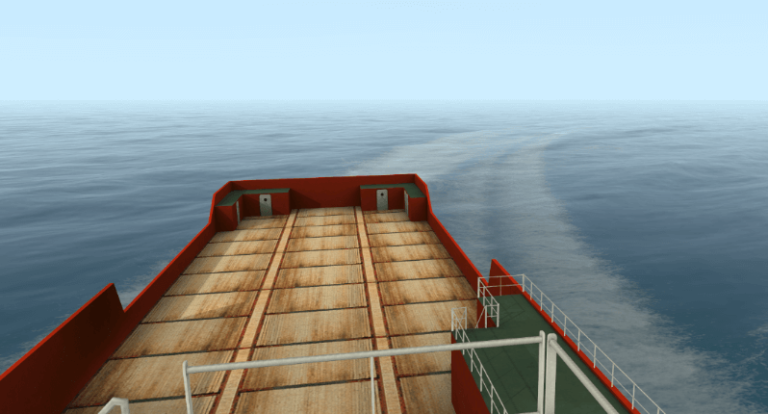
Our Shadow Controller extension has also been revised and updated. It’s now called the Adaptive Feature Controller — and while it does have a new name, it still allows users to control the parametrisation and quality of the shadows in a given scene. However, it also centralises and simplifies feature adaptations (Mirror, Monitor, and Ocean Reflections). The extension also automatically synchronises the various frame-skipping feature adaptations, distributing the calculations of shadows, reflections, and displays to be as efficient as possible given the requested level of visual quality. Visual Studio 2015 (VC14) Vortex Studio now supports Microsoft Visual Studio 2015 (VC14) C++ compiler. Until the end of 2018, legacy Microsoft Visual Studio Version 2010 (VC10) installers will be available on demand through customer support. If you are still using VC10, please consider upgrading to continue to benefit from the latest Vortex Studio features included in our frequent updates. As usual, scattered through the application, there are many other minor improvements meant to make your life easier. Please refer to the release notes to discover them all. You can download Vortex Studio 2018b right now. If you have an active maintenance and support contract, upgrade for free—download the latest installer through your online account page.
